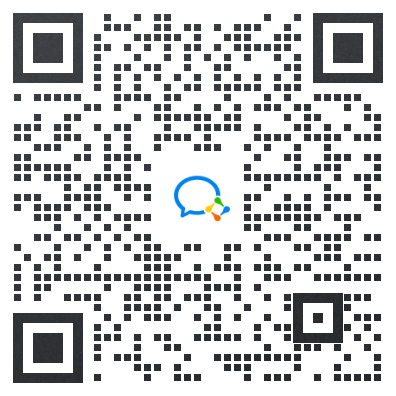當(dāng)前位置:首頁(yè)>語(yǔ)言考試 > 歷年試題 > 正文
參加過(guò)雅思考試的考生對(duì)于考試難度想必都有了相當(dāng)?shù)牧私猓虼耍胍谘潘伎荚囍腥〉酶叻郑似綍r(shí)要認(rèn)真學(xué)習(xí),也要勤加練習(xí),長(zhǎng)期的練習(xí),也能讓我們更好的掌握考試節(jié)奏。下面佳航留學(xué)網(wǎng)小編為大家整理了雅思閱讀模擬試題供大家練習(xí):

on this task.
To make it more authentic, download the test and do it with pen and paper.Read the passage below and answer 10 questions.
Ethnic Groups in Singapore In addition to being one of the smallest (and youngest) countries in the world, Singapore, with its population of less than four million, is one of the world’s most ethnically mixed countries. It is primarily Chinese, a group to which over three quarters of permanent residents assign themselves, but even in this group there are differences in languages and cultures. The other two main ethnic groups in Singapore are Malays and Indians, each representing around ten percent of the population. It has long been the goal of the government to promote Singapore as a multicultural society in which all three of these main groups enjoy equal access to the wealth, education, and social systems that Singapore offers.
For nearly seven hundred years, Chinese have been travelling to Southeast Asia in search of wealth and prosperity. Those who settled in Singapore came mainly from southern China and spoke different languages depending on which area was home. Hokkien, one of the main Chinese languages spoken in Singapore,
originates from Fujian Province. Speakers of Teochew had ancestors from eastern Guangdong. Hakka has roots in both Fujian and Guangdong. Cantonese is also spoken in Singapore today, and originates from Guangzhou. All of these languages (and more) are spoken by the Chinese population of Singapore today, though there are very few communities now that are linguistically isolated as they were in the past, and in recent years the government has also heavily promoted the teaching and learning of Mandarin to serve as a common language for the Chinese community.
Though representing a much smaller proportion of the population, the Malays are the second largest ethnic group in Singapore and the original inhabitants of Singapore. They are still today the main ethnic group throughout the region stretching from Malaysia to Indonesia and the Philippines. The Malay community in Singapore came mainly from the Malaysian peninsula, though many also came from Java and other Indonesian islands. The Malay community practices Islam,which came to the area via Arab and Indian traders in the 1400s, but their religion also retains some features of pre-islamic Hindu beliefs.
The third largest ethnic group in Singapore, slightly smaller than the Malay community, is that of the Indians. Migration from India dates mainly from the days of the British colony of Malaya in the 18th century, and most Indians came to the area as labourers recruited by the British to work on plantations.
Most of the Indian community are Tamil from the southern part of India, but a sizeable portion originates from Kerala in the southwest.
Another group of people with a long history in Singapore are known as the Peranakans. The word peranakan in Malay means ‘half-caste’ and the Peranakans are the descendants of Chinese immigrants who settled in the area and married Malay women. The groups of Chinese who travelled and settled in the region centuries ago were predominantly (if not entirely) men, and so a most were married to local women. The culture of the Peranakans is a mix of both Chinese and Malay traditions, and in most cases this group adopted the name and religion of their Chinese fathers, but retained the language and customs of their Malay mothers. Today, the Peranakan population speaks a version of Malay which borrows from Hokkien so much that Malay speakers often cannot understand the dialect.
While the Peranakan culture is being preserved and revived by organisations in Singapore, there are just a few thousand Peranakan Malay speakers left on the island.
According to the information in the reading passage, which group(s) have the following features:
A. Chinese
B. Malays
C. Indians
D. Peranakans
1. Has/Have features of more than ethnic group?
2. Is/Are united strongly through religion?
3. Speak / Speaks many different languages?
4. Is/Are not native to the Singapore region?
5. Was originally made up mostly of men?
In boxes 6-10 on your answer sheet write
Yes if the statement is true according to the article No if the statement is not true according to the article NOT GIVEN if it is not possible to determine the truth of the statement from the article
6. Originally, many Chinese communities in Singapore couldn’t ommunicate easily with each other due to linguistic differences.
7. Mandarin is the main language of Singapore.
8. Indians were the most recent of the three to arrive in Singapore.
9. Arab and Indian traders settled in Singapore in the 1400s.
10. The Peranakan language is being increasingly used in Singapore.
【參考答案】
① D
② B
③ A
④ A, C
⑤ A
⑥ YES
⑦ NOT GIVEN
⑧ YES
⑨ NO
⑩ NO
免責(zé)聲明:本站所提供的內(nèi)容均來(lái)源于網(wǎng)友提供或網(wǎng)絡(luò)搜集,由本站編輯整理,僅供個(gè)人研究、交流學(xué)習(xí)使用,不涉及商業(yè)盈利目的。如涉及版權(quán)問(wèn)題,請(qǐng)聯(lián)系本站管理員予以更改或刪除。
【責(zé)任編輯:goosail1】
院校排名 | 荷蘭阿姆斯特丹大學(xué)世界排名QS多少位?...
1970-01-01院校排名 | ?英國(guó)布里斯托大學(xué)世界排名QS多少位?...
1970-01-01院校排名 | 韓國(guó)科學(xué)技術(shù)院世界排名QS多少位?...
1970-01-01院校排名 | ?英國(guó)倫敦政治經(jīng)濟(jì)學(xué)院世界排名QS多少位?...
1970-01-01院校排名 | 美國(guó)西北大學(xué)世界排名QS多少位?
1970-01-01院校排名 | ?日本京都大學(xué)世界排名QS多少位?...
1970-01-01
掃碼加入微信群
友情鏈接:
院校對(duì)比
已添加4所院校,請(qǐng)修改